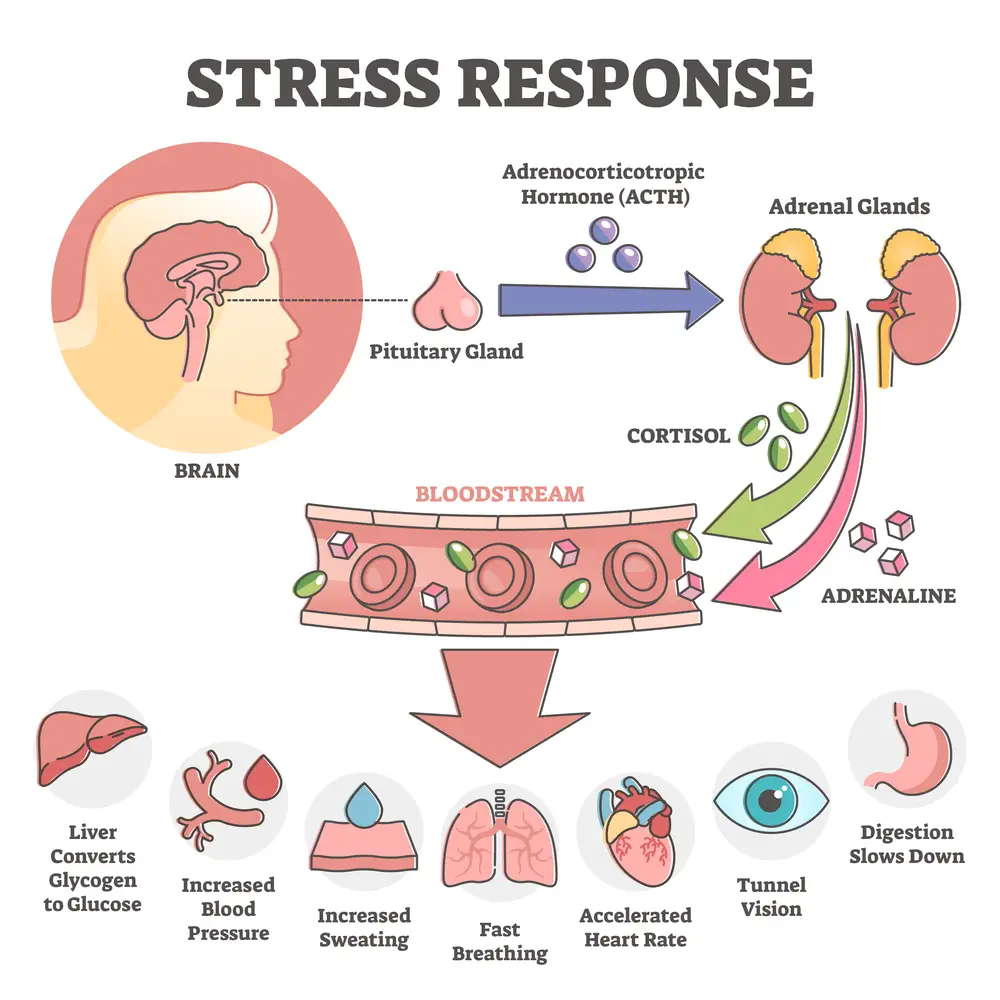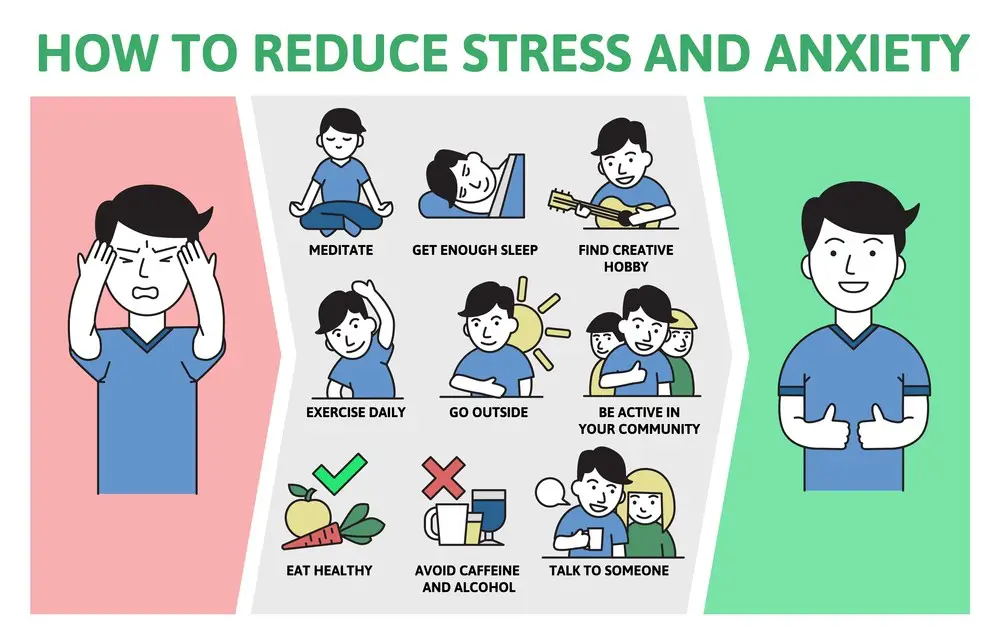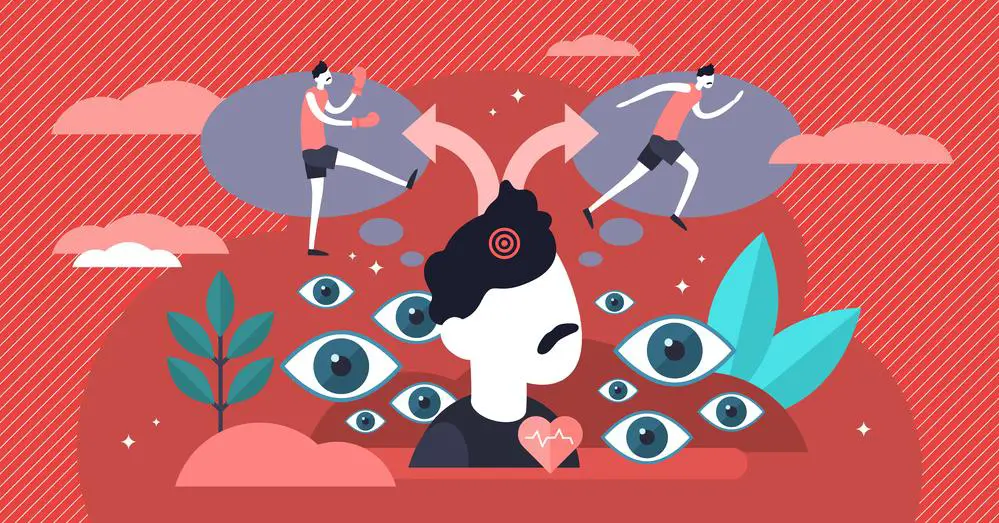As a BetterHelp affiliate, we receive compensation from BetterHelp if you purchase products or services through the links provided
The article is developed in partnership with BetterHelp.
The human stress response is a complex neurochemical process that protects someone against imminent threats. In today’s world, sources of stress can be vast and varied, a stark contrast to the environment in which the brain initially evolved. Many researchers suggest that a mismatch between the stressors of modern society and the brain’s primary stress-management system may contribute to the high levels of chronic stress seen throughout society. This article will examine how stress works in the brain and how modern stressors may present unique challenges for stress management.
The human stress-response system
 When a person experiences a stressful event, an area of the brain called the amygdala sends a distress signal to a structure called the hypothalamus. The amygdala is heavily involved in emotional processing, and the hypothalamus acts as a “command center,” which activates the rest of the nervous system. This process is the start of the fight-or-flight reflex.
When a person experiences a stressful event, an area of the brain called the amygdala sends a distress signal to a structure called the hypothalamus. The amygdala is heavily involved in emotional processing, and the hypothalamus acts as a “command center,” which activates the rest of the nervous system. This process is the start of the fight-or-flight reflex.
For example, consider someone who comes face-to-face with a bear while hiking. As soon as they notice the animal, their amygdala sends a warning signal, and the hypothalamus prepares the body to run away or engage in self-defense. It activates the sympathetic nervous system, causing blood pressure, breathing rate, and heart rate to rise. The person’s body is preparing them to avoid or minimize harm, not knowing the bear’s intentions.
The initial surge of energy upon encountering a threat is known as the “fast response” system. After that initial surge subsides, the hypothalamus activates the HPA axis, also known as the “slow response” system. The HPA axis includes the hypothalamus, pituitary gland, and adrenal glands. It relies on hormonal signals to activate the sympathetic nervous system if danger is still perceived, keeping the body on high alert and ready to engage in self-defense or flee.
In the case of our hiker, the bear decides not to pursue them and wanders off slowly. The hiker feels their body beginning to return to a low-stress state caused by a reduction in the levels of a hormone called cortisol. The adrenal glands release cortisol, and the HPA axis ultimately triggers its release. After a threat passes, cortisol levels fall and activate the parasympathetic nervous system. The parasympathetic nervous system performs the opposite function of the sympathetic nervous system. It dampens the stress response and lowers blood pressure, heart rate, and breathing rate.
From fight-or-flight to chronic stress

The brain’s stress-response system works well when presented with a sudden stressor, like a bear encounter. However, it is not as well equipped to handle low-level ongoing stressors, such as stress from modern life. Work or school obligations, family challenges, relationship struggles, or any other form of long-term stress activate the HPA axis at a lower level than a sudden threat. Still, daily stressors can sometimes keep the body’s stress response system activated for far longer than is typical.
Frequent low-level stressors that persistently activate the HPA axis often lead to chronic stress. Chronic stress occurs when the body can never achieve a low-or-no stress state. It is associated with several mental and physical health concerns, such as anxiety, high blood pressure, and weight gain. Because modern society is full of long-term, low-level stressors, it is important to consciously and deliberately manage chronic stress.
Reducing chronic stress
 One of the best ways to help manage chronic stress is to develop basic self-care routines. There are many forms of self-care, but three are often considered essential to support other self-care behaviors: adequate sleep, a healthy diet, and regular exercise. Sleep disturbances are associated with increased stress and poorer mental health overall, and a healthy diet is essential to ensure that the brain and body have the required energy to manage stressful situations. Out of sleep, diet, and exercise may be the most important factors in stress management. Evidence suggests that regular exercise substantially increases resiliency to short-term and long-term stress.
One of the best ways to help manage chronic stress is to develop basic self-care routines. There are many forms of self-care, but three are often considered essential to support other self-care behaviors: adequate sleep, a healthy diet, and regular exercise. Sleep disturbances are associated with increased stress and poorer mental health overall, and a healthy diet is essential to ensure that the brain and body have the required energy to manage stressful situations. Out of sleep, diet, and exercise may be the most important factors in stress management. Evidence suggests that regular exercise substantially increases resiliency to short-term and long-term stress.
Working with a mental health professional to develop stress-reduction goals and strategies may be helpful. Therapists are well qualified to assess stress levels and recommend stress management strategies, and many people might find online therapy helpful. Online therapy can be attended from home and may offer a person with excess stress a convenient solution for accessing therapy. For more information about online therapy, have a look at Betterhelp’s guide to the best online therapy sites using the link below:
https://www.betterhelp.com/advice/therapy/what-are-the-best-online-therapy-sites/

- 7 Ideas to Help You Relax and Unwind on a Family Vacation - April 27, 2025
- How Having Cybersecurity Protection Helps You Relax - April 25, 2025
- 8 Reasons Why Spending Time Outside Calms You Down - April 25, 2025
This site contains affiliate links to products. We will receive a commission for purchases made through these links.



